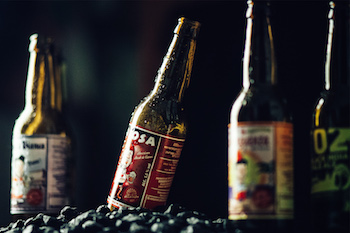 When the University of Houston’s Dr. Dipali Rinker released the findings from her research on college students and their consumption of alcohol, it forced her to coin a new term: drunkorexia.
When the University of Houston’s Dr. Dipali Rinker released the findings from her research on college students and their consumption of alcohol, it forced her to coin a new term: drunkorexia.
I wish the word was describing an inebriated T-rex…but it’s not.
Drunkorexia is the fusion of “drunkenness” and “anorexia” that refers to the combination of drinking excessive amounts of alcohol while simultaneously restricting the amount of food one consumes. The two-fold purpose of this practice is as simple as it is disturbing. First, it allows the young person to consume more calories of alcohol without weight gain because food calories have been cut. Second, it allows alcohol to enter the bloodstream more quickly, giving users a quicker buzz.
Of course, the practice is not without its consequences and risks; in addition to vitamin depletion and decreased inhibitions, Dr. Rinker said other “serious negative consequences” could be related to this habit, as well. But that seems to be a risk that many college students are willing to take.
But before we label college campuses a den of thieves bent on corrupting our otherwise righteous teenagers, maybe we should look at the findings from another university.
Michigan State’s Dr. Cliff Broman analyzed alcohol (and drug) data from 15,000 cases grouped in three average age brackets: 16, 22, and 29. What he found falls into a category aptly named “Completely Unsurprising.” His research discovered that teens who have access to alcohol and drugs in their home are more likely to use both substances in their college years (age 22) and their late twenties (age 29). In other words, the 16-year-olds growing up in a drug/alcohol-rich environment were “generally” the same 22-year-olds and 29-year-olds who chose to drink and use drugs across other spans of life. Without a doubt, these parents bear some responsibility.
But parents aren’t the only ones contributing to the delinquency of minors (and, by extension, college kids). If research from across the pond is taken into consideration, advertising for alcoholic beverages seems to play a role, too. A study from the European Union on 9,000 teenagers (averaging 14 years in age) from Poland, Germany, Italy, and the Netherlands revealed that “exposure to alcohol marketing of all kinds was positively associated with adolescents’ alcohol use over time.” Europe, the “world’s heaviest-drinking region,” launched the study to see how the varying laws and practices surrounding alcohol advertising impacted young people. In the end, lead researcher Avalon de Bruijn said, “Our study highlights the need to restrict the volume of alcohol marketing to which young people are exposed in everyday life. It’s no longer just a matter of restricting television ads.”
I wonder what they would say about some of our alcohol-saturated songs in the US?
Shaping the Future
It’s easy to see how alcohol can shape a kid’s future. Fortunately, caring adults like parents and youth workers can also shape a kid’s future with regards to alcohol. According to research from one more university, that of Wake Forest in North Carolina, the best ways for parents to prevent their kids from underage drinking is to set clear rules that prohibit drinking in the first place.
Over 1,100 teens and young people from 24 cities in 7 states participated in the study. Lead author Dr. Mark Wolfson claimed that teens who had parents that set clear rules against drinking were 35% less likely to go to parties where alcohol was served. Further, the kids who did attend parties where alcohol was served were 38% less likely to drink if their parents had strict rules against it.
I’d say this is great news for several reasons. First and foremost, it shows that caring adults can still make an incredible difference in kids’ lives. But it also shows that young people are willing to take direction from those adults on very serious issues. With regard to the issue of alcohol, keep two simple points in mind.
- Right now matters. Alcohol use is a topic to address immediately and frequently. Assuming your kid isn’t still in diapers, there are ways to address this topic at almost every age. Personally, we started crafting our message about alcohol use when our son was around 4 or 5 years old. No, we didn’t show him graphic images of crumpled cars or alcohol-soaked brains during autopsies, but we did talk about choices. Now that he’s older, the message has morphed a bit to complement his growing maturity. The bottom line is simple: talk about alcohol with your kids right now.
- Your habits matter. You cannot preach one lifestyle while practicing another and just hope for the best. The research above illustrates that basic truth. If you try to justify your actions with a “do as I say not as I do mentality,” just know that you’re running a risk with your child’s future hanging in the balance. What they see you do – not just what they hear you say – is crucial to their behavior. So make sure your life lines up with your lessons.
While it’s true that teens who start drinking early in life tend to drink later in life, as well, the good news is, we get to shape their lives early on. Make sure your message – and your methodology – is pointing your kids in the right direction.
David R. Smith
David R. Smith is the author of several books including Christianity... It's Like This and speaks to parents and leaders across the U.S. David is a 15-year youth ministry veteran, now a senior pastor, who specializes in sharing the gospel, and equipping others do the same. David provides free resources to anyone who works with teenagers on his website, DavidRSmith.org David resides with his wife and son in Tampa, Florida.



